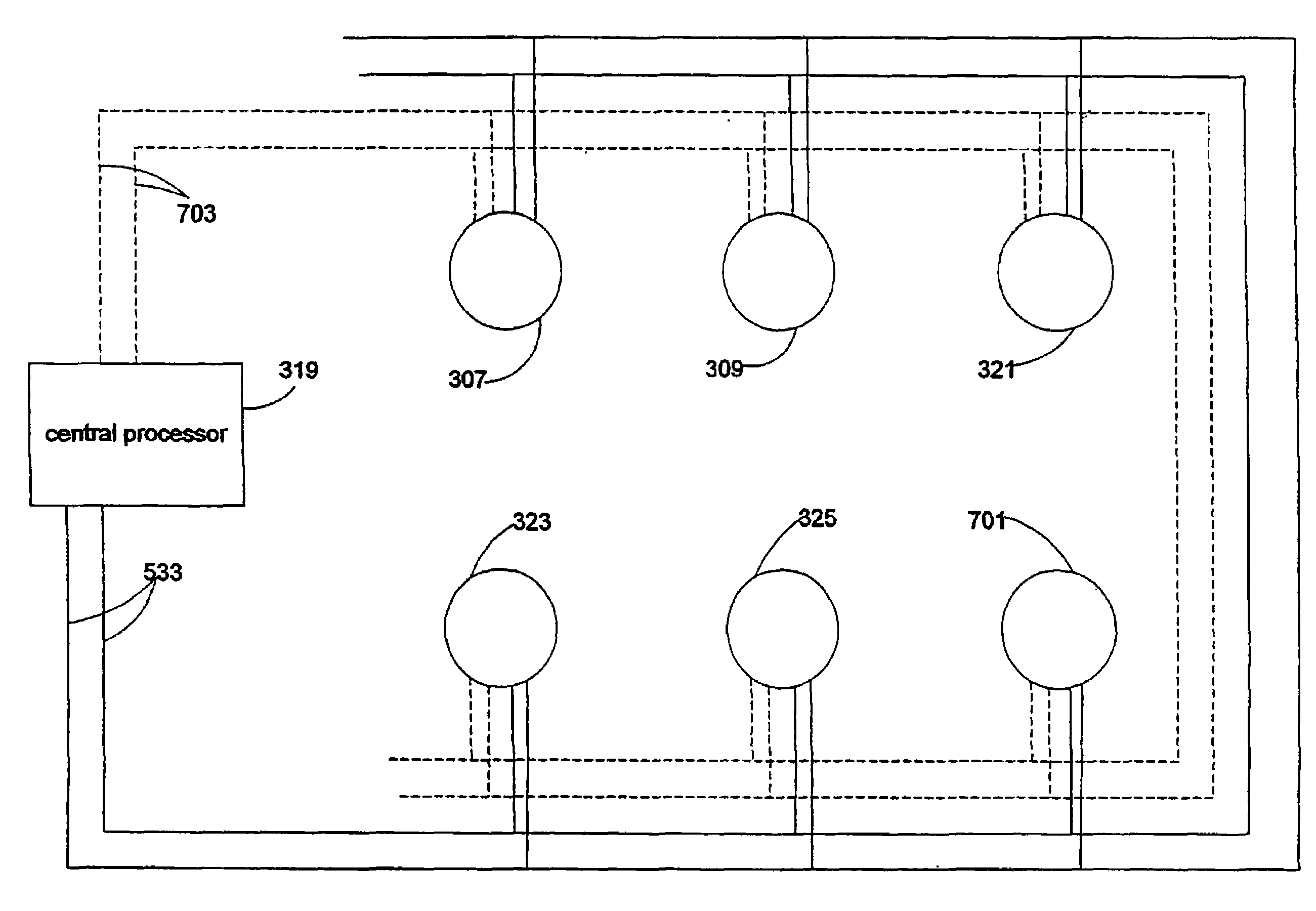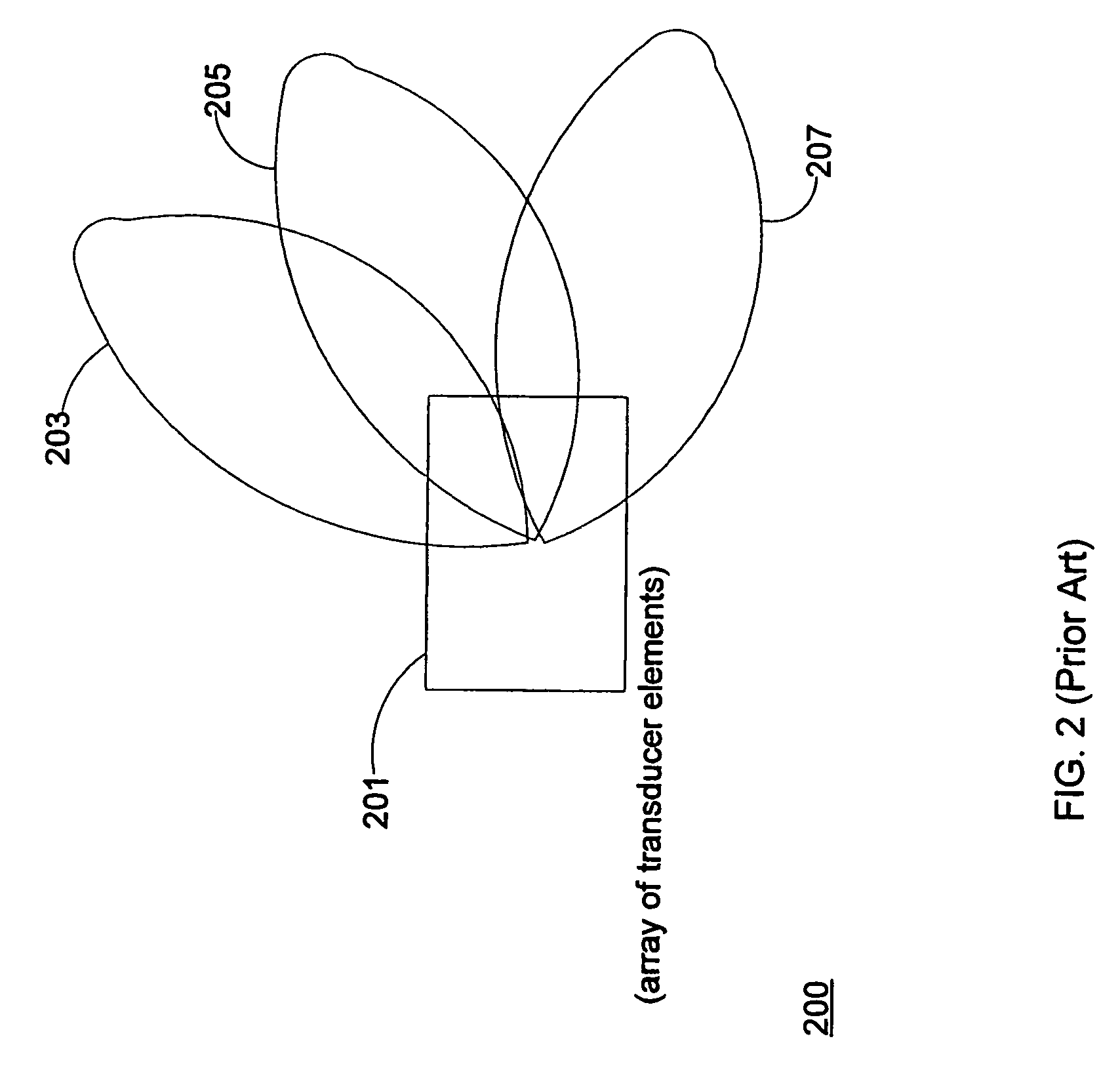Acoustic fence
a technology of acoustic fence and acoustic barrier, which is applied in the direction of sonic/ultrasonic/infrasonic transmission, using reradiation, instruments, etc., can solve the problems of increasing complexity and cost, high power level, and high cost of sonar systems, and achieves the effect of minimizing the error function
- Summary
- Abstract
- Description
- Claims
- Application Information
AI Technical Summary
Benefits of technology
Problems solved by technology
Method used
Image
Examples
Embodiment Construction
[0027]In the following description of the various embodiments, reference is made to the accompanying drawings which form a part hereof, and in which is shown by way of illustration various embodiments in which the invention may be practiced. It is to be understood that other embodiments may be utilized and structural and functional modifications may be made without departing from the scope of the present invention.
[0028]FIG. 1 illustrates a ship 101 that floats at a water surface 103 and that is protected by a sonar system. In FIG. 1, ship 101 is located in a harbor with a water depth 105. The sonar system protects ship 101 from intruders that pass under water (between water surface 103 and a water bottom 109) through a protection distance 107. Moreover, water depth 105 may vary in the protected region of ship 101.
[0029]FIG. 2 shows a sonar system 200 that protects ship 101 from underwater intruders in accordance with prior art. Sonar system 200 deploys an array of transducer elemen...
PUM
 Login to View More
Login to View More Abstract
Description
Claims
Application Information
 Login to View More
Login to View More - R&D
- Intellectual Property
- Life Sciences
- Materials
- Tech Scout
- Unparalleled Data Quality
- Higher Quality Content
- 60% Fewer Hallucinations
Browse by: Latest US Patents, China's latest patents, Technical Efficacy Thesaurus, Application Domain, Technology Topic, Popular Technical Reports.
© 2025 PatSnap. All rights reserved.Legal|Privacy policy|Modern Slavery Act Transparency Statement|Sitemap|About US| Contact US: help@patsnap.com



